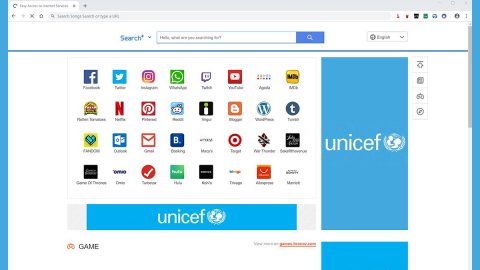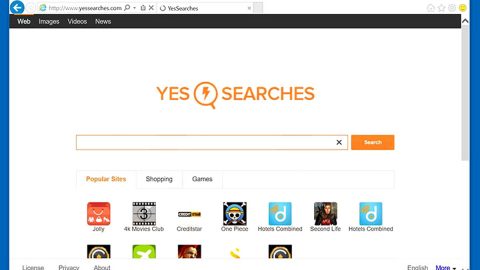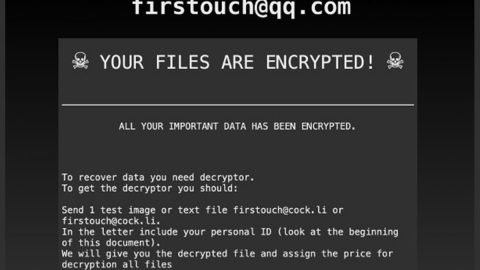What is L1LL ransomware? And how does it implement its attack?
L1LL ransomware is a new crypto-malware discovered on March 18 this year. There is not much information about this new threat but according to security experts, it could be possible that this threat is a test release and is still under development although that does not mean that it can’t encrypt files in an infected computer.

Based on the analysis of the samples collected from this crypto-malware, once it implements its attack, it drops its payload file in the system which establishes a connection to a remote server. It collects information from the system using a data gathering module and sends them to the remote server. It then places its malicious components that are downloaded from the server and places them in different system folders. It also makes use of a stealth protection module which allows it to bypass all the security programs installed in the system to prevent them from interfering with the attack.
In addition, L1LL ransomware creates and modifies entries in the Registry which allows it to achieve persistence as well as launch or repress system processes. It then scans the computer in search for files which has the extensions listed below:
.3dm, .3g2, .3gp, .7zip, .aaf, .accdb, .aep, .aepx, .aet, .ai, .aif, .as, .as3, .asf, .asp, .asx, .avi, .bmp, .c, .class, .cpp, .cs, .csv, .dat, .db, .dbf, .doc, .docb, .docm, .docx, .dot, .dotm, .dotx, .dwg, .dxf, .efx, .eps, .fla, .flv, .gif, .h, .idml, .iff, .indb, .indd, .indl, .indt, .inx, .jar, .java, .jpeg, .jpg, .js, .m3u, .m3u8, .m4u, .max, .mdb, .mid, .mkv, .mov, .mp3, .mp4, .mpa, .mpeg, .mpg, .msg, .pdb, .pdf, .php, .plb, .pmd, .png, .pot, .potm, .potx, .ppam, .ppj, .pps, .ppsm, .ppsx, .ppt, .pptm, .pptx, .prel, .prproj, .ps, .psd, .py, .ra, .rar, .raw, .rb, .rtf, .sdf, .sdf, .ses, .sldm, .sldx, .sql, .svg, .swf, .tif, .txt, .vcf, .vob, .wav, .wma, .wmv, .wpd, .wps, .xla, .xlam, .xll, .xlm, .xls, .xlsb, .xlsm, .xlsx, .xlt, .xltm, .xltx, .xlw, .xml, .xqx, .xqx, .zip
After finding its targeted files, L1LL ransomware starts encrypting them using a sophisticated encryption algorithm and appends the .L1LL extension to every affected file. Following data encryption, it opens a file named “help.txt” which contains the following content:
“Hello. Your files have been encrypted.
For help, write to this e-mail: [email protected]
You need to follow the following instructions:
- a) Download and install TOR browser: hxxps://www.torproject.org/download/download-easy.html.en
- b) From the TOR browser, follow the link: torbox3uiot6wchz.onion
- c) Register your e-mail (Sign Up)
- d) Write us on e-mail: [email protected]
Attach to the letter 1-2 files (no more than 3 MB) and your personal key.
ATTENTION: e-mail ([email protected]) accepts emails, only with e-mail registered in the TOR browser at torbox3uiot6wchz.onion
Your personal key:
[random characters]”
How is the malicious payload of L1LL ransomware distributed over the web?
The malicious payload of L1LL ransomware might spread using various distribution methods such as fake updates, repacked and infected installers, exploit kits, botnets, and most especially, malicious spam emails which is why you must always practice precaution when you download any file online as it might be the malicious payload of L1LL ransomware. It would also be better if you keep both your computer system and antivirus programs updated.
To kill L1LL ransomware from your computer and restore encrypted files, follow the guidelines laid out below.
Step_1: The first thing you need to do is to obliterate the process of L1LL ransomware by opening the Task Manager – simply tap the Ctrl + Shift + Esc keys on your keyboard.
Step_2: After that, click the Processes tab and look for the suspicious-looking process that takes up most of your CPU’s resources and is most likely related to L1LL ransomware and then end them all.
Step_3: Now that the malicious process is eliminated, close the Task Manager.
Step_4: Next, tap Win + R, type in appwiz.cpl and click OK or tap Enter to open Control Panel’s list of installed programs.
Step_5: Under the list of installed programs, look for L1LL ransomware or anything similar, and then uninstall it.
Step_6: Then close Control Panel and tap Win + E keys to launch File Explorer.
Step_7: Navigate to the following locations below and look for L1LL ransomware’s malicious components like the file named help.txt, and [random].exe, as well as other suspicious files it has created and downloaded into the system and then delete all of them.
- %APPDATA%
- %TEMP%
- %WINDIR%\System32\Tasks
- %APPDATA%\Microsoft\Windows\Templates\
- %USERPROFILE%\Downloads
- %USERPROFILE%\Desktop
Step_8: Close the File Explorer.
Before you go on any further, make sure that you are tech-savvy enough to the point where you know exactly how to use and navigate your computer’s Registry. Keep in mind that any changes you make will highly impact your computer. To save you the trouble and time, you can just use Restoro this system tool is proven to be safe and excellent enough that hackers won’t be able to hack into it. But if you can manage Windows Registry well, then by all means go on to the next steps.
Step_9: Tap Win + R to open Run and then type in Regedit in the field and tap enter to pull up Windows Registry.
Step_10: Navigate to the following path:
- HKEY_LOCAL_MACHINE\Software\Microsoft\Windows\CurrentVersion\Run
- HKEY_CURRENT_USER\Software\Microsoft\Windows\CurrentVersion\Run
- HKEY_LOCAL_MACHINE\Software\Microsoft\Windows\CurrentVersion\RunOnce
- HKEY_CURRENT_USER\Software\Microsoft\Windows\CurrentVersion\RunOnce
- HKEY_LOCAL_MACHINE\SOFTWARE\Microsoft\Windows\CurrentVersion\Authentication\LogonUI\Background
- HKEY_LOCAL_MACHINE\SOFTWARE\Policies\Microsoft\Windows\Personalization
- HKEY_CURRENT_USER\Control Panel\Desktop\ScreenSaveTimeOut
- HKEY_CURRENT_USER\Control Panel\Desktop
Step_11: Delete the registry keys and sub-keys created by L1LL ransomware.
Step_12. Close the Registry Editor and empty the Recycle Bin.
Try to recover your encrypted files using the Shadow Volume copies
Restoring your encrypted files using Windows Previous Versions feature will only be effective if L1LL ransomware hasn’t deleted the shadow copies of your files. But still, this is one of the best and free methods there is, so it’s definitely worth a shot.
To restore the encrypted file, right-click on it and select Properties, a new window will pop up, then proceed to Previous Versions. It will load the file’s previous version before it was modified. After it loads, select any of the previous versions displayed on the list like the one in the illustration below. And then click the Restore button.
Congratulations, you have just removed L1LL Ransomware in Windows 10 all by yourself. If you would like to read more helpful articles and tips about various software and hardware visit fixmypcfree.com daily.
Now that’s how you remove L1LL Ransomware in Windows 10 on a computer. On the other hand, if your computer is going through some system-related issues that have to get fixed, there is a one-click solution known as Restoro you could check out to resolve them.
This program is a useful tool that could repair corrupted registries and optimize your PC’s overall performance. Aside from that, it also cleans out your computer for any junk or corrupted files that help you eliminate any unwanted files from your system. This is basically a solution that’s within your grasp with just a click. It’s easy to use as it is user-friendly. For a complete set of instructions in downloading and using it, refer to the steps below
Perform a full system scan using Restoro. To do so, follow the instructions below.













